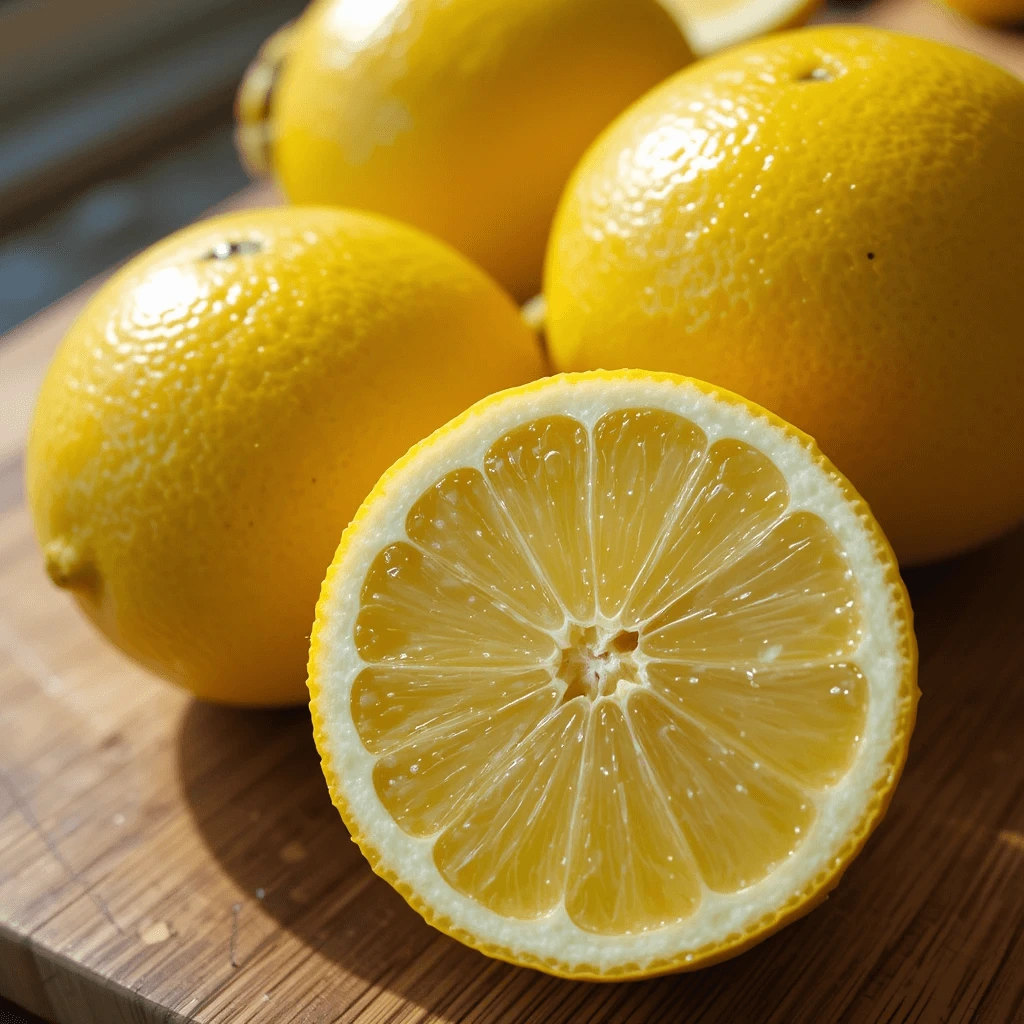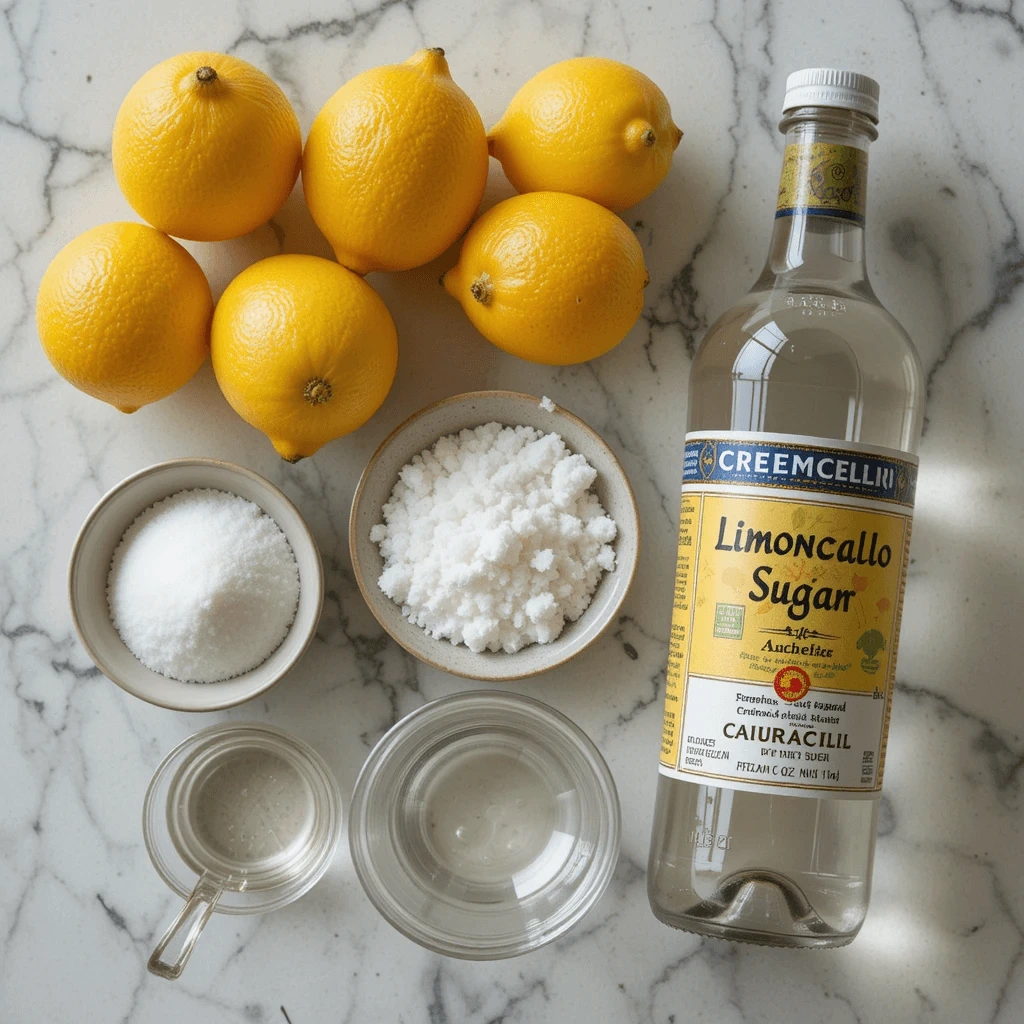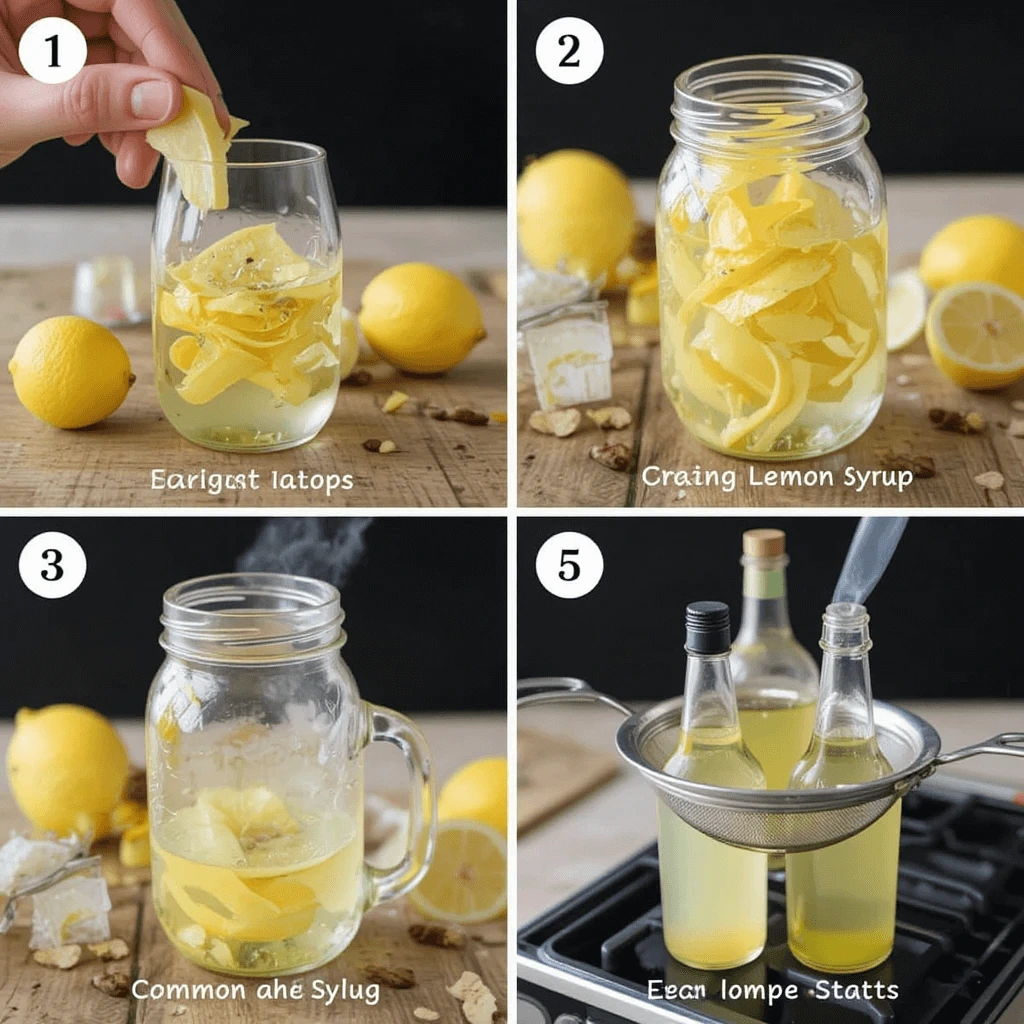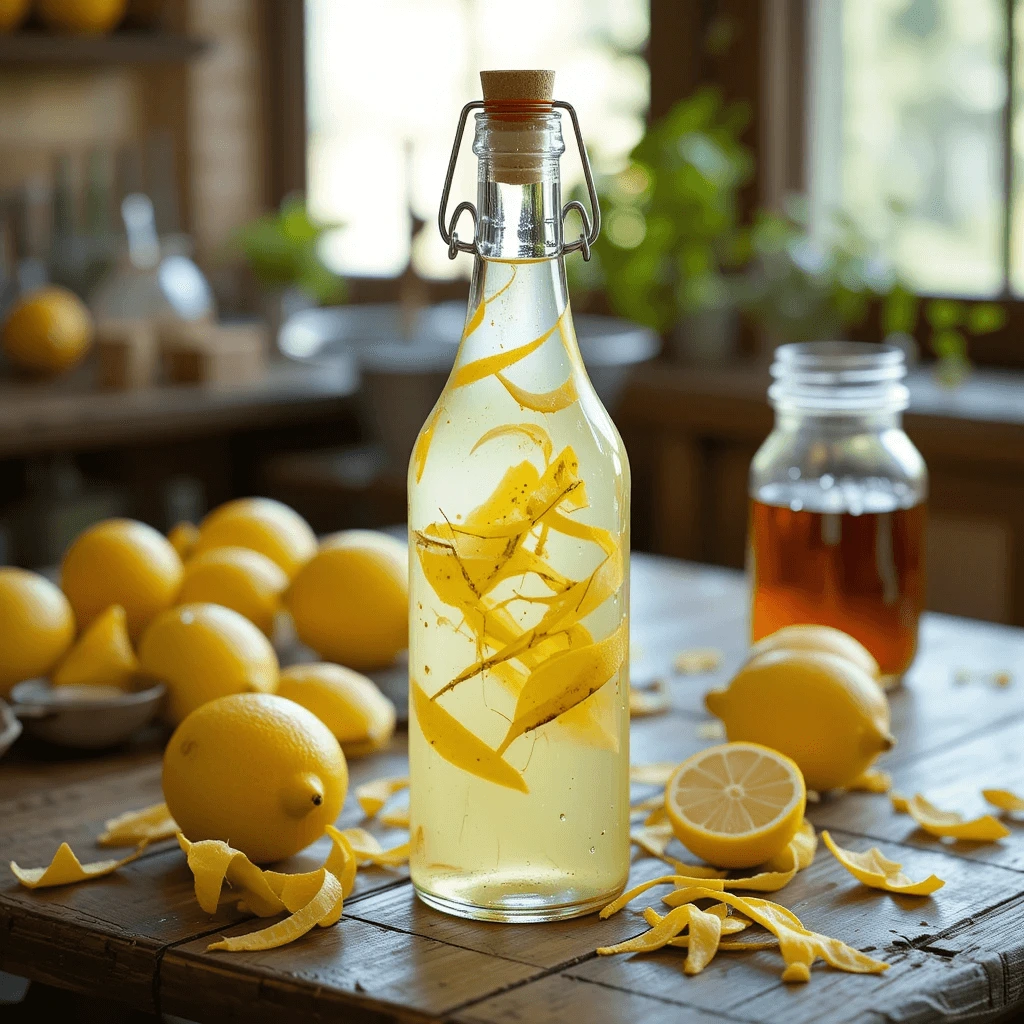There’s something timeless and deeply satisfying about sipping a chilled glass of limoncello recipe. With its vibrant color, bold citrus aroma, and smooth finish, limoncello is more than just a drink — it’s a small taste of southern Italy in a bottle. Traditionally served as a digestif, this lemon liqueur has become a beloved symbol of Italian hospitality and simplicity.
Making limoncello at home might sound intimidating, but it’s surprisingly easy. All it takes is fresh lemons, alcohol, sugar, and patience. Unlike commercial brands filled with additives and artificial flavors, homemade limoncello is clean, bright, and refreshing. It captures the pure flavor of real lemon zest without anything extra.
Whether you’re drawn to its sunny flavor or looking to create a thoughtful, handcrafted gift, this recipe will show you exactly how to make limoncello from scratch — the authentic Italian way.

Key Benefits of Making limoncello recipe
1. Pure and Natural Ingredients
When you make limoncello at home, you control everything that goes into it. That means no preservatives, no artificial colors, and no mystery additives — just real lemons, sugar, and alcohol.
2. Better Flavor than Store-Bought
Store-bought versions often taste overly sweet or synthetic. Homemade limoncello lets the bold, aromatic oils from real lemon peels shine through, giving you a cleaner, fresher finish with real citrus character.
3. Surprisingly Easy Process
The steps are simple: zest lemons, steep in alcohol, mix with syrup, and bottle. Most of the time is hands-off, letting the alcohol extract flavor from the peels while you wait.
4. Customizable Sweetness
Prefer a lighter, sharper flavor? Use less syrup. Like it richer? Add more sugar. This recipe is flexible, so you can adjust it to your exact taste.
5. Perfect for Gifts and Gatherings
Limoncello bottles make beautiful, thoughtful gifts. With just a few ingredients and some decorative jars, you can prepare a batch of artisanal liqueur that friends and family will love.
6. Long Shelf Life
Homemade limoncello lasts for months when stored properly. Keep a bottle in your freezer for impromptu dinners, celebrations, or a refreshing nightcap.
7. A True Taste of Italy
This is more than just a recipe — it’s a cultural tradition. Limoncello has been made in southern Italy for generations. When you make it yourself, you’re bringing that tradition into your own kitchen.
| Nutrient | Amount per 100 ml | Health Benefits |
|---|---|---|
| Calories | 150 kcal | Provides energy; moderate due to sugar and alcohol |
| Total Fat | 0 g | Fat-free beverage |
| Sodium | 0 mg | Sodium-free; good for blood pressure control |
| Total Carbohydrates | 16 g | Source of quick energy; mostly from sugar |
| Sugars | 16 g | Sweetness comes from added sugar |
| Protein | 0 g | No protein content |
| Vitamin C | Trace amounts | From lemon peel; supports immune function and skin health |
| Vitamin B6 | Trace amounts | Supports metabolism and brain health |
| Potassium | Trace amounts | Helps maintain fluid balance and muscle function |
| Alcohol Content | Approx. 30-35% ABV | Acts as preservative; responsible for the liqueur’s effect |
Ingredients limoncello recipe
Making limoncello requires only a few key ingredients, but choosing the right ones makes all the difference. Aim for the freshest, most fragrant lemons you can find and use high-proof alcohol to extract the most flavor.
Essential Ingredients (Yields approximately 1.5 liters)
- 10 organic lemons (unwaxed; Sorrento lemons if available)
- 750 ml grain alcohol (95%) or high-proof vodka (at least 40%)
- 3 cups (600 g) granulated sugar
- 3 cups (710 ml) filtered water
Equipment You’ll Need
- Vegetable peeler or microplane zester
- Large glass jar (1.5 to 2 liters) with tight-fitting lid
- Fine-mesh strainer or cheesecloth
- Funnel
- Clean glass bottles or jars for storing the finished limoncello
Tip: Always use organic lemons. You’ll be using the peel, and waxed or treated lemons can affect both flavor and safety.

4. Instructions
Making limoncello at home is a straightforward process. While it takes time for the flavors to develop, the hands-on work is minimal.
1: Wash and Dry the Lemons
Rinse the lemons thoroughly under cold water. Scrub away any dirt and pat them completely dry with a clean towel.
2: Peel the Lemons
Use a vegetable peeler or zester to remove only the bright yellow outer layer of the lemon peel. Avoid the bitter white pith underneath.
The lemon zest contains essential oils that will infuse the alcohol with flavor and aroma. Take your time to peel carefully.
3: Infuse the Lemon Peels
Place all the lemon peels into a large, clean glass jar. Pour in the alcohol, making sure the peels are fully submerged. Seal the jar tightly.
Store the jar in a cool, dark place for at least 7 days and up to 30 days. Shake the jar gently every few days to help the infusion process.
The longer it sits, the more robust and complex the lemon flavor will become.
4: Make a Simple Syrup
As the infusion nears completion, make a simple syrup by combining the sugar and water in a medium saucepan over medium heat.
Stir gently until the sugar dissolves completely. Do not let the mixture boil. Once fully dissolved, remove from heat and let it cool to room temperature.
5: Strain and Combine
After the infusion period, strain the lemon peels from the alcohol using a fine-mesh strainer or cheesecloth. Discard the peels.
In a large mixing bowl or clean jar, combine the strained alcohol with the cooled simple syrup. Stir slowly and thoroughly to blend.
6: Bottle and Rest
Use a funnel to pour the finished limoncello into clean bottles or jars. Seal each bottle tightly.
Let the limoncello rest in the refrigerator or freezer for at least 5 to 7 days before drinking. This allows the flavors to mellow and integrate.
Once it’s ready, serve it well-chilled. The result is a smooth, vibrant lemon liqueur with a balance of sweetness, tartness, and warmth.

Pro Tips and Variations
Use the Right limoncello recipe
The best limoncello starts with the right fruit. Organic, unwaxed lemons are essential because you’re using the peels. If you can find Sorrento or Amalfi lemons, even better — their thick, fragrant skins are ideal for this recipe.
Don’t Rush the Infusion
While it’s tempting to strain the alcohol after just a few days, more time equals deeper flavor. Allow at least one week for a mild infusion, but for authentic results, let the peels steep for three to four weeks.
Avoid the Pith
The white pith under the lemon peel is bitter and can ruin the balance of your limoncello. Take care to zest only the yellow skin.
Adjust the Sweetness
This recipe strikes a balance between tart and sweet. If you prefer a lighter or stronger flavor, adjust the simple syrup. More syrup = sweeter limoncello. Less syrup = stronger, drier flavor. Always taste as you mix.
Choose the Right Alcohol
Grain alcohol (95%) produces a clearer, more intense flavor. Vodka (40%) is a gentler option and easier to find. Both work well, but the higher proof will extract more lemon oil and result in a stronger finish.
Filter for Clarity
To get that signature limoncello clarity, filter your final product through cheesecloth or a coffee filter before bottling. This removes any remaining zest particles or cloudiness from the mixture.
Add Flavor Variations (Optional)
- Vanilla Limoncello: Add a split vanilla bean to the alcohol during the last week of infusion.
- Herbal Notes: Try adding a few sprigs of fresh basil or thyme for a delicate herbal twist.
- Orange or Mixed Citrus: Combine lemon peels with orange or grapefruit zest for a more complex flavor profile.
These variations aren’t traditional, but they can add a fun and creative element if you’ve mastered the classic version.
Serving Suggestions
limoncello recipe is traditionally served ice-cold in a small glass after meals, but there are many other ways to enjoy it.
Serve it Chilled
Always serve limoncello cold. Store it in the freezer so it’s ready whenever you need it. The high alcohol content prevents it from freezing solid, so it’s always perfectly chilled and syrupy.
Use as a Digestif
The most common use in Italy is as a digestif — a drink served after meals to help with digestion. A small glass of limoncello after a heavy dinner feels refreshing and light.
Add to Cocktails
Limoncello makes an excellent base or accent in cocktails. Here are a few ideas:
- Limoncello Spritz: Mix with prosecco and sparkling water over ice.
- Lemon Drop Martini: Combine limoncello with vodka and fresh lemon juice.
- Citrus Sangria: Add a splash to a white wine sangria for extra brightness.
Pair with Desserts
Limoncello enhances citrus-based desserts. Serve it with:
- Lemon sorbet
- Pound cake or olive oil cake
- Cheesecake with lemon zest
- Vanilla gelato
Use in Baking or Cooking
You can also use limoncello as an ingredient. It adds a sweet citrus note to glazes, frostings, and even savory sauces. Just a tablespoon or two can brighten up many recipes.
Gift It
Pour limoncello recipe into decorative bottles, label them by hand, and tie with ribbon or twine. It’s an elegant homemade gift that feels personal and thoughtful, especially during holidays or special occasions.

Conclusion
Making limoncello recipe at home is easier than it seems, and the results are well worth the wait. With just lemons, alcohol, sugar, and water, you can create a smooth, vibrant Italian liqueur that’s rich with citrus aroma and perfect for sipping chilled. Whether you enjoy it after dinner, in a cocktail, or drizzled over dessert, this homemade limoncello delivers authentic flavor with every sip.
Unlike mass-produced versions, your homemade batch lets you control the sweetness, strength, and overall balance. It’s flexible, simple, and rewarding — an ideal make-ahead treat for entertaining or gifting.
Take your time during the infusion, use high-quality lemons, and taste as you go. Once you make it once, you’ll understand why limoncello is a staple in so many Italian kitchens — and why your guests will keep asking for more.
FAQs
How long does homemade limoncello last?
If stored in a sealed bottle in the refrigerator or freezer, limoncello can last up to one year. The high alcohol and sugar content act as natural preservatives. For best flavor, use within six months.
Can I use regular lemons?
Yes, but organic lemons are strongly recommended since you’ll be using the peel. Avoid lemons with wax coatings or pesticides.
Is it necessary to use grain alcohol?
Grain alcohol extracts more lemon oil and results in a more traditional flavor, but high-proof vodka is a suitable substitute. The final taste will be slightly softer and less intense.
Can I make it less sweet?
Absolutely. Reduce the amount of sugar in the syrup, or dilute the syrup with a bit more water. Just keep the ratios balanced to maintain flavor integrity.
Why is my limoncello cloudy?
Cloudiness can result from oils released during infusion or an imbalance when mixing syrup and alcohol. It’s harmless, but if you prefer a clear result, filter it through a coffee filter before bottling.
Do I need to refrigerate limoncello?
Yes. Store it in the refrigerator or freezer to keep it chilled and preserve its flavor. Limoncello is traditionally served cold, and storing it this way enhances both texture and taste.
Can I double the limoncello recipe recipe?
Yes. The recipe scales well. Just maintain the same ratios between alcohol, zest, sugar, and water. Use a larger jar for infusion and more bottles for storage.
Is it safe to drink right after mixing?
Technically, yes — but letting it rest in the refrigerator for at least 5 to 7 days improves the flavor. The resting period allows the alcohol and syrup to fully blend and mellow out.
“Pair this limoncello with a light starter like this 5-Ingredient Taco Soup”
(Links to your taco soup recipe – great for contrast and balance in a meal.)
“Learn how Italians traditionally serve limoncello after a meal on Eataly’s Guide to Digestifs.”

